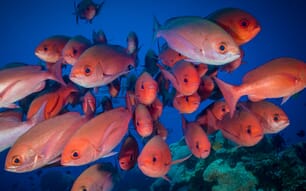Comparative genomics is a powerful tool to transfer genomic information from model species to related non-model species. Channel catfish (Ictalurus punctatus) is the primary aquaculture species in the United States.
Its existing genome resources such as genomic sequences generated from next generation sequencing, BAC end sequences (BES), physical maps, linkage maps, and integrated linkage and physical maps using BES-associated markers provide a platform for comparative genomic analysis between catfish and other model teleost fish species.
This study aimed to gain understanding of genome organizations and similarities among catfish and several sequenced teleost genomes using linkage group 8 (LG8) as a pilot study.
Results
With existing genome resources, 287 unique genes were identified in LG8. Comparative genome analysis indicated that most of these 287 genes on catfish LG8 are located on two homologous chromosomes of zebrafish, medaka, stickleback, and three chromosomes of green-spotted pufferfish.
Large numbers of conserved syntenies were identified. Detailed analysis of the conserved syntenies in relation to chromosome level similarities revealed extensive inter-chromosomal and intra-chromosomal rearrangements during evolution. Of the 287 genes, 35 genes were found to be duplicated in the catfish genome, with the vast majority of the duplications being interchromosomal.
Conclusions
Comparative genome analysis is a powerful tool even in the absence of a well-assembled whole genome sequence. In spite of sequence stacking due to low resolution of the linkage and physical maps, conserved syntenies can be identified although the exact gene order and orientation are unknown at present.
Through chromosome-level comparative analysis, homologous chromosomes among teleosts can be identified. Syntenic analysis should facilitate annotation of the catfish genome, which in turn, should facilitate functional inference of genes based on their orthology.
July 2013


